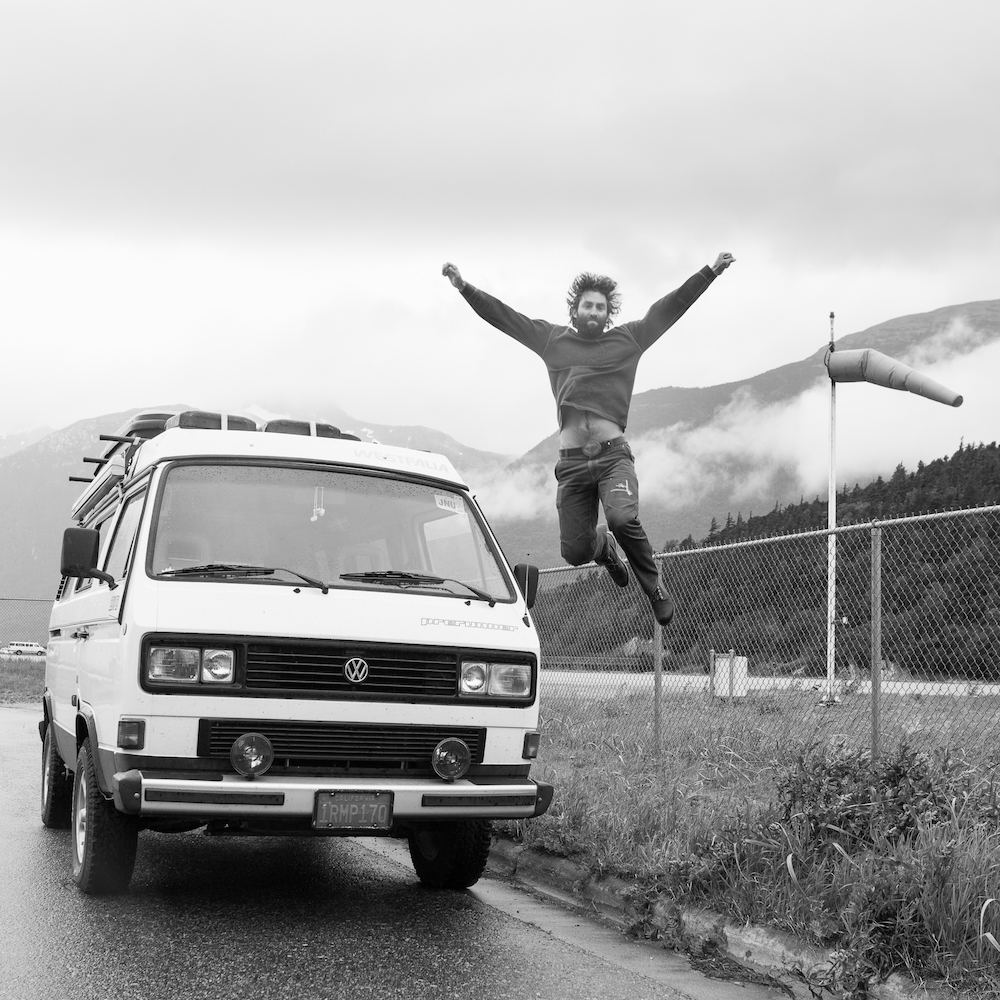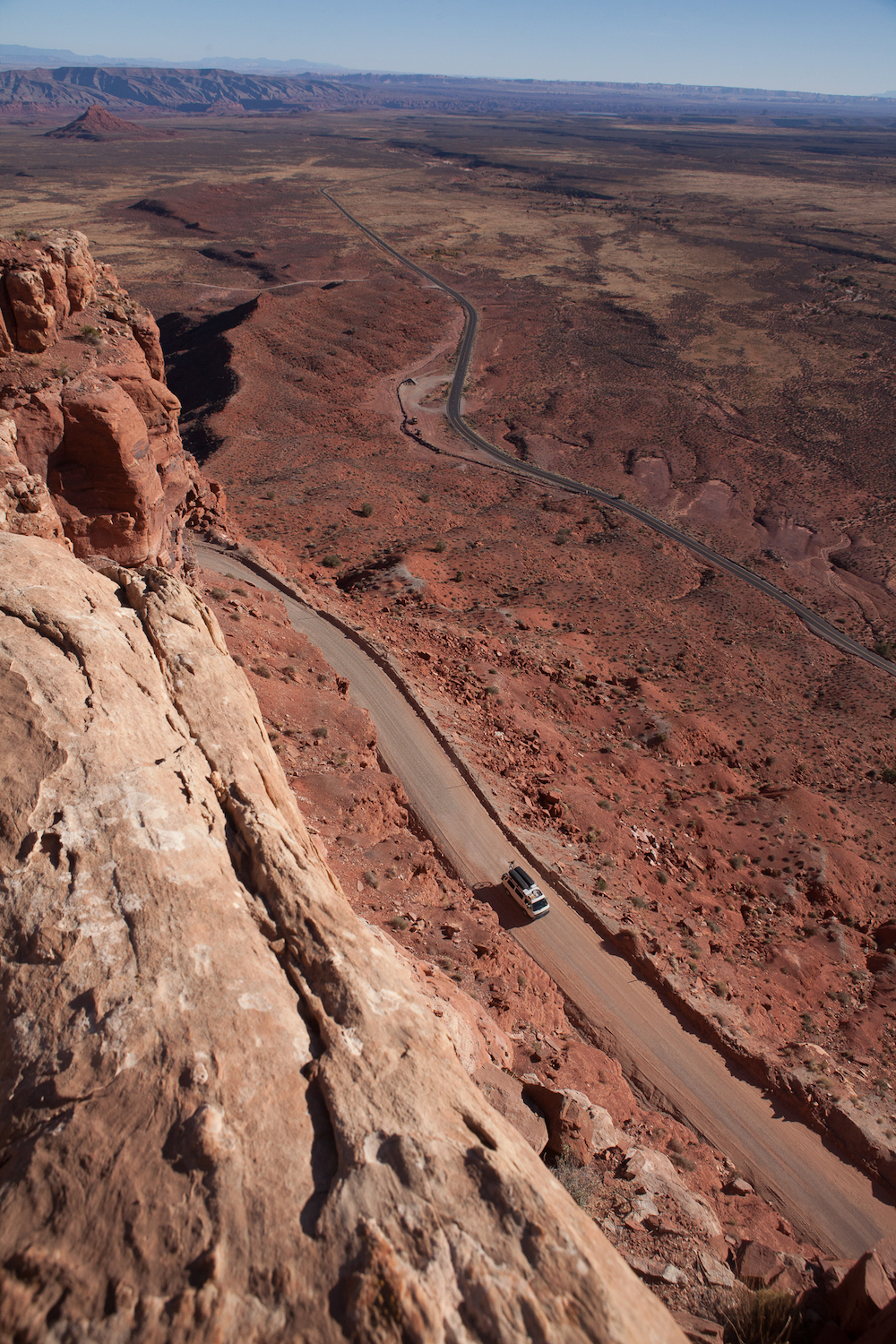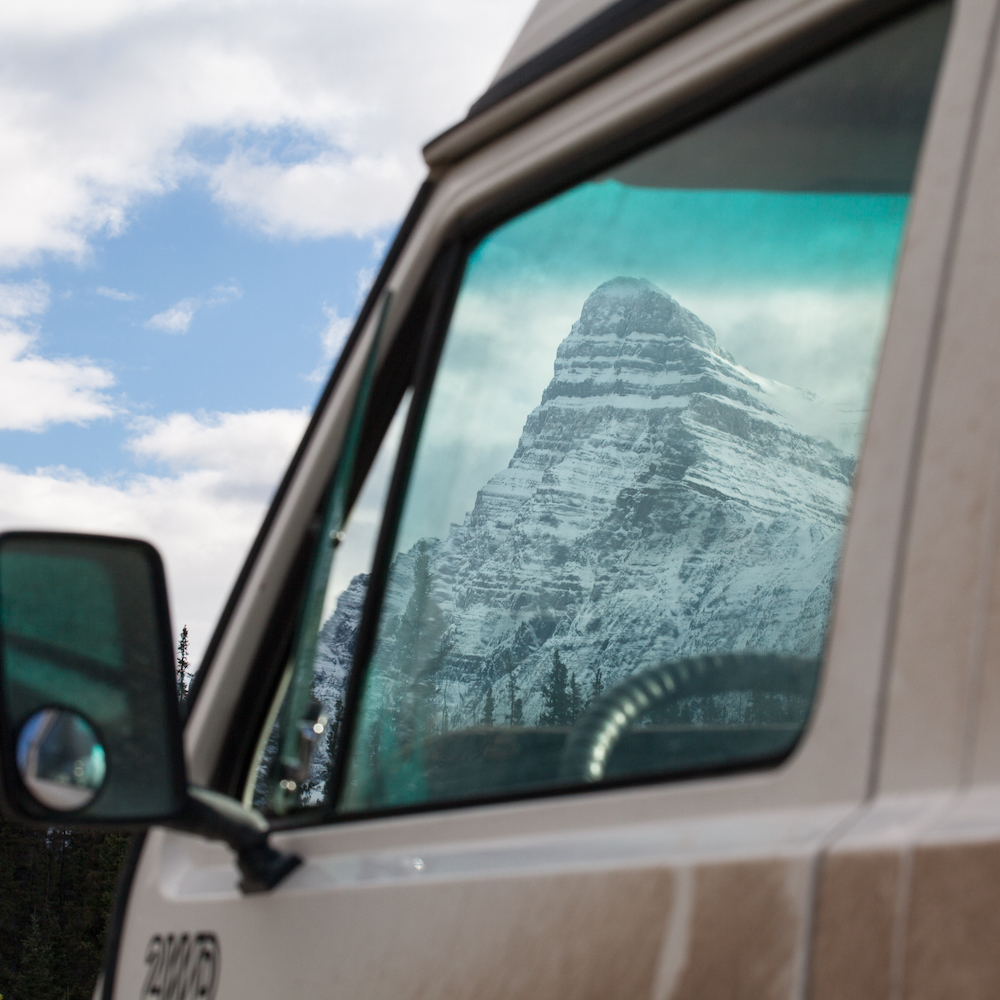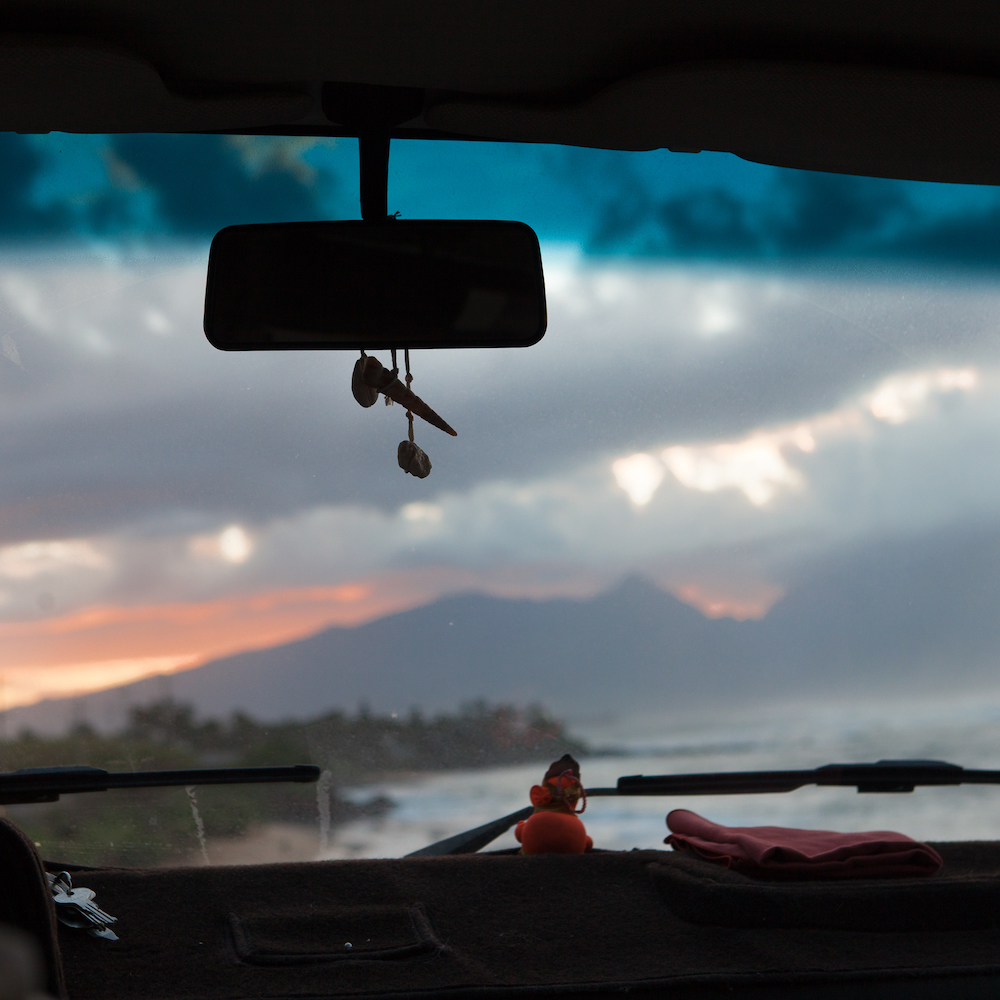I recently had the opportunity to interview Matt McDonald, about his time as a vanlifer, transitioning out of that lifestyle, and his latest project, At Glacier’s End.
Please introduce yourself and tell us a bit about your story. How did you get involved in vanlife?
Hi, my name is Matt McDonald, and I’m an author and photographer. I traveled solo in my 1986 Volkswagen Vanagon from 2013-2015. During this time I was seeking the deserted places and finest nature of western North America, from New Mexico to Alaska. I had saved up some cash from working the tech scene in San Francisco and viewed my time in the van as freedom from the “safe-bet” thought process I held closely to my whole life. I also thought of my travels as an artist’s school, in a way. No better way to learn and practice a craft than to constantly be in my favorite medium, nature.
The idea to live and work in my van was partly inspired by Foster Huntington (and a few other original IG vanlifers), though I’ve been humbled often by older folks, who remind me that vanlife is nothing new… it’s as old as the vehicle itself. What’s new is people posting their “vanlife” to social media, mostly through Instagram.



So, you spent two years traveling solo in a Volkswagen Vanagon. Can you try to explain what solo travel in a vehicle is like?
Solo travel is being open to getting strong doses of the highest highs and the lowest lows. Since there is no partner to negotiate itinerary or decisions with, solo exploration can lead to profound internal and external freedom, as well as learnings. I’ve always been someone who needs solo time to regenerate and think clearly, especially after long bouts around people.
However, without a traveling partner, there is no social shield from loneliness and wondering “what the heck am I doing out here?” Those feelings were overwhelming at times. Lastly, I don’t think we talk enough about how many menial tasks have to happen just to keep a van rolling. While solo, you’re taking on all of those, while with a partner the tasks are halved. And again, there is the other side of that coin – while solo you do whatever you want, whenever you want, all the time.


As you previously mentioned, you are no longer living in a van full-time. Are you willing to share what that transition out of the lifestyle was like for you? What was particularly challenging and what was easier than expected?
Transitioning out of vanlife was one of the hardest things I’ve ever done, even though I exited into a beautiful situation. I met my wife photographing a wedding on Maui, and shipped my van out after 3 months of dating, thus ending my two years of solo travel on the mainland. I felt a great internal change or wisdom gained over those two years of travel, but it was hard to hold onto it while staying put. Travel is expansive, but travel is also a distraction. I certainly had (and still have) some demons that I was running from – constant motion allows you to keep chasing the high rather than maturely – and finally – dealing with your lows… whatever those things are for you.
So once the motion stopped, I was still left with the same problems, both internally and externally. That being said, it felt unexpectedly good having a stable community, rather than always being a transient. I met some incredible, life long friends on the road, but there’s nothing like truly embedding yourself in a community where you can build super deep relationships (and also be held accountable if you mess up).


Now that you are stepping away from living in a van full-time, what would you say your biggest lesson has been? Additionally, reflecting on your experience, is there anything you would have done differently or wish you would have known at the beginning?
I think it’s important to travel because you want to explore something about yourself, not to run away from something. As I said above, I think I was doing a little running, but overall my vanlife time was extremely positive. It was positive for my career, for finding my wife, and for committing to my ideal lifestyle (creativity not tech). I would imagine the itch to buy a van and leave is higher than ever these days, because it’s been so glorified (and now commodified) on social media. So if you want to do it, find your unique reason for going, don’t follow my reason or someone else’s. At the end of the day, this should be for you, and help you grow in the ways you need to grow.
What I would have done differently: I always tell people I wish I would’ve gone slower, and seen fewer places. I drove a lot, rarely staying put for over 2 or 3 days at a time. But the places I went super deep are the ones that stay near to my heart – for example, Alaska, Olympic Peninsula, and Southern Utah. I hear this same depth over breadth comment from a lot of friends who have traveled extensively or lived in their vans.


What are you currently up to? Any major projects you are working on or plans you have in the works?
I’ve been doing a ton of writing lately, and that feels good. I just published my first book, a collaboration with Chris Burkard (his images, my words) called At Glacier’s End. It’s a travelogue narrative built around Iceland’s glacier rivers and the country’s movement to protect them all from being dammed and used for aluminum production. A bit obscure I know, but it’s a beautiful piece of art that’s a compilation of 10 years of Chris’ most iconic aerial river photography and a damn good story (if I do say so). The tale in Iceland is a microcosm of the problem facing humans worldwide: how do we build prosperous communities while coexisting with our natural landscapes?
Beyond At Glacier’s End, a short film I wrote about an Icelandic surfer/photographer will be debuting at the Tribeca film festival in April. Super excited about that. I also have a few books in the brainstorming phase, one that will be a travelogue about my time living on the road in the van.

Tell us a bit about your recent project: At Glaciers End. How was the idea born? What was the inspiration behind it?
Chris Burkard first saw the abstract beauty and majesty of Iceland’s glacial rivers back in 2010. He became obsessed with them and has spent the last ten years building an insanely beautiful body of aerial imagery. Somewhere in the middle of his documentation, he discovered that all of Iceland’s major rivers were threatened by dams, mainly to create power for American aluminum companies. He thought creating a body of work around his images could be impactful, but it also needed a message of awareness and conservation to give a voice to these wild rivers.
That is where I came in – to write the story of At Glacier’s End, that approaches this topic through the lens of a traveler. It takes in cultural and environmental perspectives to understand how Iceland got here, and where they could go from here. The inspiration on my end is easy to find – working on a super meaningful project at the intersection of people and their natural environments, a place I believe my curiosity and creativity thrives. And that’s how At Glacier’s End was born.

What is it about Iceland that drew you so strongly and fueled this project, At Glacier’s End?
Iceland is this colorful, raw volcanic island that is still erupting regularly… and it’s more than 10% covered by ice. Iceland combines my favorite landscapes – volcanically created mountains and massive glaciers. Because of the way the island was formed, and ice accumulated on top of that rock, you get these colorful glacier rivers like nothing I’ve ever seen before. They look fake with their orange, red, and teal tentacles snaking through the landscape and cascading over massive waterfalls.
There’s some serious power in the Icelandic landscape; you can’t help but leave feeling more alive. It seems like an old place, yet new at the same time because of its erupting volcanoes (every 3 years on average). Also, because Icelanders really value the world’s opinion, it felt like this project, At Glacier’s End – which advocates for a national park encompassing 40% of the island – could have a tangible impact. The legislation for the park is moving through the Parliament right now, for a vote happening most likely by end of 2020. If you believe in the power of wild places, please lend your voice with whatever platform you have. Iceland’s glacial rivers are truly a wonder of our world, and the power of this shows through our project, At Glacier’s End.

What has been your biggest takeaway so far as a nomadic creative in the outdoor world?
Being nomadic is a great way to gather stories and seek inspiration… but turning all of that into something meaningful… that hard work is easier done while staying put. I’ve always believed in this “go out and gather” then “come home and work” mentality of travel creative work.
Do you think you will ever live or travel long-term in a van again?
I do. Taking off in a van into the middle of nowhere gives me a feeling of freedom impossible to attain elsewhere. While I can get by for long periods without it, I know I’ll need to “go out and gather” and fill the inspiration tank again at some point. For what I care most about, there’s no better way to do that than by getting out on the land and communicating directly with it and the people who inhabit it. I’d also love to experience that lifestyle with my wife soon. We’re both road trip junkies at heart.


What are your long-term goals and dreams?
Many things have already gone very well for me in my life. I am very grateful every day. I still have real struggles of course, but, truly, I already have everything I need. At this point, it’s my ego that needs the rest. My biggest life goal is to continue to remain true to the little voice inside. The one that urged me into the van without an end date. That urged me to Hawai’i without a big plan. The one that urged me to face my self-consciousness and write a book. The voice that tells me I can, when other voices tell me I can’t.
There are so many ways to get sidetracked from your dreams, be it yourself or family or responsibilities or money. I want to keep finding a way to commit to and make a living from creativity, because I believe it is a noble, fun, and challenging lifestyle. I would love to write a book at some point that reaches a massive audience, and perhaps moves them a little bit in this thing called life we’re all navigating together.



Are there any other details or stories you would like to add?
I suppose a short one since I’ve already blathered on here. My first breakdown in the van was outside of Livingston, Montana. The shop owner wasn’t too thrilled to learn that I lived in my van. It meant I’d be living in his shop for however long it took him to fix me up. It took three or four days for the parts to arrive, and we got to be friendly. He was an old man, maybe 75, so I helped him out around the shop with manual tasks. I walked to town and watched movies by myself in the middle of the day… just kinda existed.
When he finally got around to working on my van, he gave a big sigh before he started. He knew it was going to take even him some time to fix it. “These old Volkswagen vans will make you a very patient man,” he said. Indeed. Since then I’ve done nearly all my own repairs and maintenance, by now I’ve replaced most of the van. I just finished a complete rust rebuild/restoration that took me almost four months. There’s a reason mechanics costs so much. The job itself is an act of patience.


**All photos provided by Matt McDonald!**
Please provide some links where people can find you online:
Instagram: https://www.instagram.com/63mph/
Website: https://63mph.com/
Facebook: https://www.facebook.com/63mph/
At Glacier’s End – purchase here!









